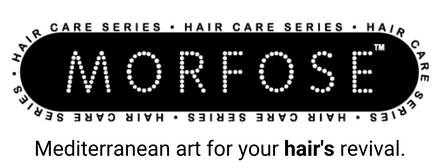Creating Texture and Dimension with Professional Hair Cutting Techniques
Posted by MORFOSE COSMETICS

Creating Texture and Dimension with Professional Hair Cutting Techniques
Introduction
In this comprehensive guide, we will explore a variety of cutting techniques used by skilled hairstylists to bring life and movement to your hair. Whether you're looking to add volume, enhance your natural curls, or create a trendy layered look, we've got you covered. Let's delve into the world of professional hair cutting techniques and discover how you can achieve the hairstyle of your dreams.
1. Understanding the Importance of Texture and Dimension
Before we dive into the specific techniques, let's first understand why texture and dimension are crucial elements in hairstyling. Texture refers to the way your hair feels and looks, while dimension adds depth and visual interest to your hairstyle. By incorporating texture and dimension, you can transform a flat, lifeless hairstyle into one that is vibrant, dynamic, and full of personality.
2. Layering Techniques for Added Volume
Layering is a versatile technique that hairstylists employ to create volume, movement, and texture in hair. By strategically removing weight and blending different hair lengths, layers can add body and bounce to your locks. Here are some popular layering techniques:
2.1. Long Layering
Long layering is an excellent option for those with longer hair who desire added movement and volume. This technique involves cutting longer layers throughout the hair, starting around the mid-lengths and continuing to the ends. Long layers help to prevent the hair from appearing heavy and can provide a soft and flowing effect.
2.2. Short Layering
Short layering works best for individuals with shorter hair who want to enhance texture and create dimension. The stylist incorporates shorter layers strategically to add volume and shape. This technique is especially effective for those with thin or fine hair, as it can create the illusion of fuller locks.
2.3. Graduated Layering
Graduated layering is a technique that creates a stacked effect, with shorter layers at the back and longer layers towards the front. This technique is often used in bob haircuts to add volume and structure. Graduated layering is ideal for those looking to achieve a bold and edgy hairstyle.
3. Texturizing Techniques for Added Definition
Texturizing techniques involve removing bulk and adding texture to the hair, resulting in a more defined and styled look. Let's explore some popular texturizing techniques:
3.1. Point Cutting
Point cutting is a technique where the stylist uses scissors to cut the hair at an angle, creating textured ends. This technique is commonly used to soften blunt cuts, add movement, and remove weight. Point cutting is especially effective for those with thick hair, as it helps to prevent the hair from appearing heavy and bulky.
3.2. Razor Cutting
Razor cutting involves using a razor tool to slice through the hair, creating soft, feathered ends. This technique is ideal for achieving a lived-in, effortless look. Razor cutting can add texture and movement to both short and long hairstyles, giving them a relaxed and tousled appearance.
3.3. Thinning Shears
Thinning shears, also known as texturizing shears, are designed to remove bulk from the hair without significantly altering the length. This technique is beneficial for individuals with thick or dense hair, as it can reduce volume and create a more manageable hairstyle. Thinning shears are often used to create texture in layered cuts or to soften the edges of a style.
4. Styling Techniques to Enhance Texture and Dimension
While cutting techniques play a significant role in creating texture and dimension, styling techniques are equally important. Here are some styling tips to maximize the impact of your haircut:
4.1. Using Volumizing Products
To enhance the volume and texture of your hair, incorporate volumizing products into your styling routine. Products such as mousses, texturizing sprays, and dry shampoos can add body, lift, and hold to your hairstyle, making it appear fuller and more textured.
4.2. Curling and Waving Techniques
Curling or waving your hair can instantly add dimension and movement. Use a curling iron or hot rollers to create soft waves or curls throughout your hair. This technique works well for both short and long hairstyles and can give your hair a glamorous and sophisticated look.
4.3. Backcombing for Extra Volume
Backcombing, also known as teasing or ratting, involves gently teasing the hair at the roots to create volume and lift. This technique is particularly useful for achieving a voluminous updo or adding height to specific sections of your hairstyle.
Conclusion
Creating texture and dimension in your hair can elevate your style and transform your overall look. By understanding and utilizing professional hair cutting techniques, you can achieve the hairstyle of your dreams. From layering to texturizing, these techniques offer endless possibilities for adding volume, movement, and personality to your hair.



